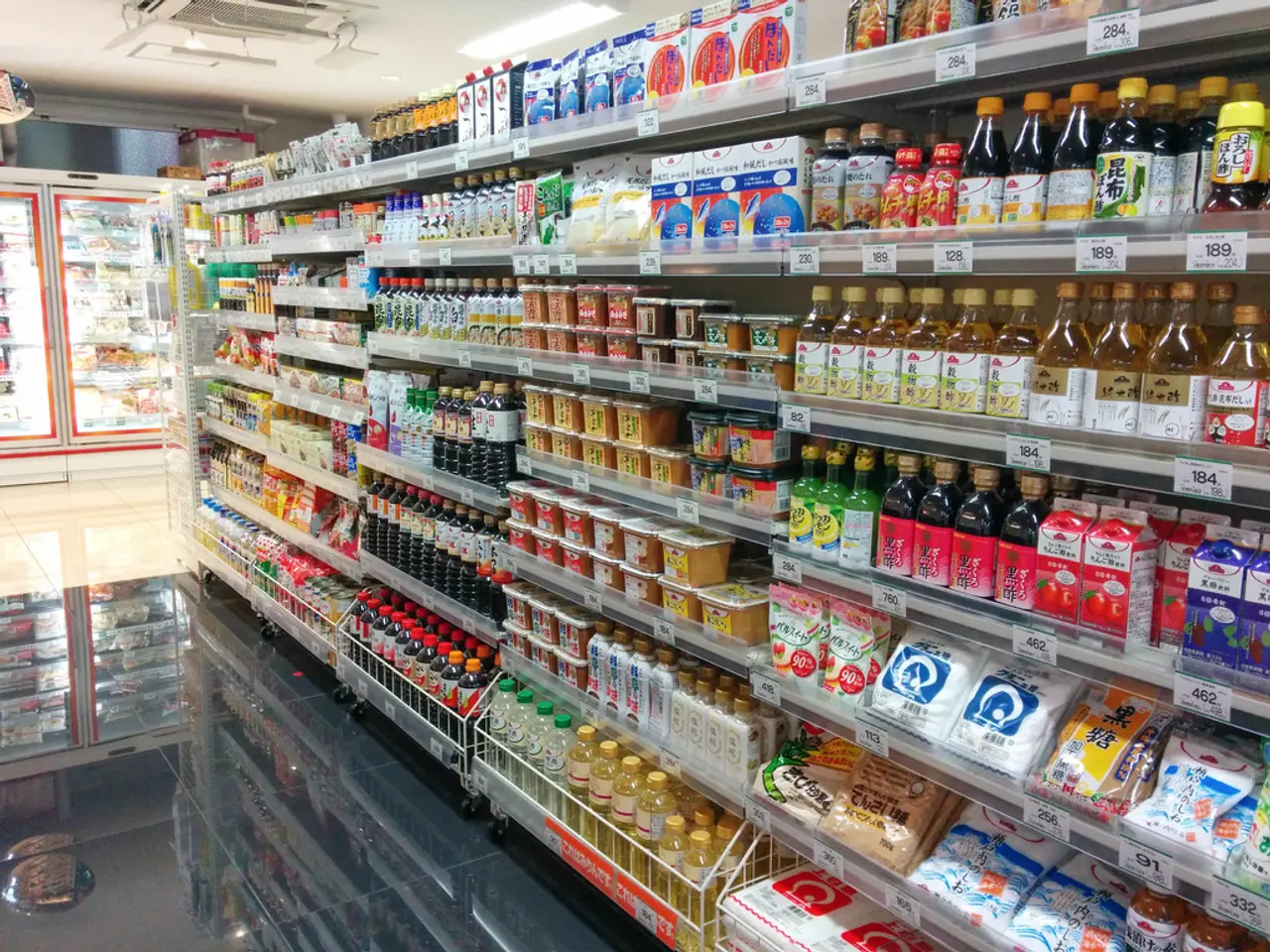Adjusting Trade Barriers: Utilizing Flexible Pricing Strategies as a Safeguard Measure
=========================================================================
In the face of escalating global tariffs, businesses are adopting strategic approaches to protect their margins in the short term. These strategies primarily revolve around targeted cost management, pricing adjustments, and supply chain agility.
Strategic Pricing Adjustments
Companies are analysing margin impacts at a granular level, considering factors such as product type, pack size, channel, and geography. Instead of broad, uniform price increases, they are optimising assortments and promotional spend by reallocating investments from lower-margin and higher-tariff-exposed SKUs to better-performing ones. This helps prevent volume loss due to consumer price sensitivity and maintains retailer relationships requiring pricing transparency.
Rebate Agility
Dynamic rebate programs can help shield customers from sticker shock and preserve volume by offering conditional discounts or rebates that can be adjusted quickly in response to evolving tariff costs. This rebate agility allows businesses to flexibly respond to changing cost structures while avoiding direct shelf price increases that might trigger demand drops—thus protecting margin indirectly.
Portfolio-Based Margin Management
A thorough understanding of customer price sensitivity combined with cost modeling of tariff scenarios enables firms to craft nuanced price adjustments, balancing the need to recapture costs without significantly reducing demand. Transparent, planned communication with customers around these pricing strategies supports maintaining trust and volume.
Tariff Engineering and Classification
On the product side, companies may engage in tariff engineering—altering product components or design to qualify for lower tariff rates—and rigorously audit Harmonized Tariff Schedule (HTS) codes to ensure proper classification, avoiding excessive tariffs. These short-term product-level adjustments can mitigate tariff cost impact without raising prices.
Inventory and Supply Chain Adjustments
Short-term inventory management strategies, such as adjusting safety stock levels, order quantities, and storage locations, help optimise cash flow and reduce exposure to tariff-driven cost fluctuations. While more related to margin preservation overall, these actions support pricing and rebate flexibility by stabilising supply costs.
In summary, strategic pricing adjustments enable companies to recover tariff-related cost increases in a demand-sensitive manner, while rebate agility offers a flexible tool to cushion customers from upfront price shocks, preserving sales volumes and supplier relationships. Combined with targeted portfolio margin management, product engineering, and inventory optimisations, these approaches form a comprehensive short-term response to guard margins amid evolving global tariffs.
When navigating tariff impacts, clarity in communication with customers is crucial to avoid tension. Businesses worldwide are evaluating strategic levers to provide immediate protection from tariffs. Segmented impact assessment allows for pricing adjustments across product categories, customer segments, and competitive positioning.
Organisations should develop an analytical foundation to have visibility into cost impacts, cross-elasticity effects, and competitive positioning across their portfolio. The broader trend toward trade fragmentation is likely to continue, making the ability to rapidly assess and respond to cost volatility valuable long after the current headlines fade.
Setting up infrastructure for fast, flexible price changes across products and channels is necessary, supported by streamlined workflows and more frequent, detailed profit and margin reporting. Global tariffs are a major inflection point for global commerce.
Building strong relationships with distributors and resellers is essential for preserving sales volume while protecting margins. Establishing new manufacturing partnerships typically requires months or years. P&G implemented quarterly price adjustments during the Covid-19 pandemic to maintain and grow margins without compromising volume sales. Nestle was able to follow a similar strategy in the food and drink space.
Capital investments for supply chain restructuring can be substantial. Rebate restructuring can help trading partners navigate shared challenges by incentivising volume while maintaining margins. Supply chain restructuring offers long-term resilience but faces practical constraints when addressing immediate margin protection.
The transport sector has successfully communicated value through fuel surcharges, passing costs through with total transparency. Developing these core capabilities helps address immediate tariff challenges and positions businesses for greater resilience against future disruptions. Product qualification and quality assurance introduce additional delays.
Andrew Butt, CEO of Enable, emphasises the importance of these strategies, stating, "Strategic pricing adjustments can help provide quicker margin protection while longer-term supply chain initiatives develop." Forbes Technology Council is an invitation-only community for world-class CIOs, CTOs, and technology executives.
Andrew Butt, CEO of Enable, recommends strategic pricing adjustments as a quick method to protect margins, saying, "Strategic pricing adjustments can help provide quicker margin protection while longer-term supply chain initiatives develop." As technology advances, finance and business leaders may leverage dynamic rebate programs to offer flexible discounts or rebates that respond to changing tariff costs, preserving sales volumes and supplier relationships. These technological solutions, combined with strategic pricing adjustments, portfolio-based margin management, and inventory and supply chain adjustments, provide a comprehensive approach to tackle margin protection amid technology-driven disruptions like escalating global tariffs.




